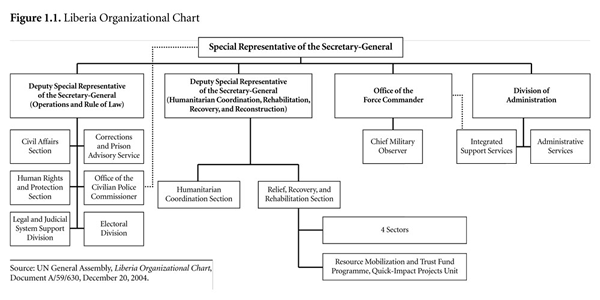Guide for Participants in Peace, Stability, and Relief Operations
UN Peacekeeping, cont'd.
Modern peace enforcement missions involve simultaneous political, military, and humanitarian activities in contrast to traditional UN peacekeeping, which involved only military tasks—such as monitoring cease-fires, separating hostile forces, and maintaining buffer zones. UN Police officers, electoral observers, human rights monitors, and other civilians have joined military peacekeepers. These civilians are responsible for a range of tasks, from protecting and delivering humanitarian assistance to helping former opponents carry out complicated peace agreements. UN personnel have been called upon to help disarm and demobilize former fighters, to train and monitor civilian police, and to organize and observe elections. Working with UN agencies and other humanitarian organizations, UN representatives have assisted with refugee return, monitored respect for human rights, cleared land mines, and begun reconstruction.
Click to see a table of ongoing UN peacekeeping missions.
Not all UN peace operations have been successful. A high-level panel on UN peace operations chaired by Ambassador Lakhdar Brahimi (www.un.org/peace/reports/ peace_operations/) found that peacekeeping missions had not achieved their objectives because UN Secretariat staff lacked sufficient expertise and had not given the Security Council the hard truth about the size of forces and financial resources needed to conduct successful operations. The Secretariat had also failed to counsel against unachievable UNSC mandates. The Brahimi report called upon the Security Council to provide clear and achievable peacekeeping mandates and supply adequate resources for UN missions. The report found that the Department of Peacekeeping Operations needed additional experienced military and police personnel to develop and support missions, as well as standby reserves of equipment and forces and added logistics capacity to reduce delays in mission deployments. The report urged the United Nations to develop doctrine and establish a best-practices unit. The Brahimi report was approved by the Millennium Summit held at UN headquarters on September 6-8, 2000. The summit called on all relevant UN bodies to consider its recommendations. Subsequently, some of the report's recommendations were adopted, but many of its more far-reaching suggestions remain on the United Nations' agenda for future action.
Despite the failure to fully implement the reforms recommended in the Brahimi report, a RAND Corporation study found that UN peacekeeping efforts generally have been successful, despite the frequent mismatch between ambitious mandates and modest means. "UN missions are nearly always undermanned and underfunded, with uneven troop quality and late-arriving components. But despite these handicaps, the UN success rate among missions studied (seven out of eight societies left peaceful, six out of eight left democratic) substantiates the view that UN-led nation-building can be an effective means of terminating conflicts, insuring against their reoccurrence, and promoting democracy." (Dobbins 2005, 234-236) The study concluded that the United Nations was most suitable for nation-building missions requiring fewer than 20,000 troops, given its comparatively low cost structure and the greater degree of international legitimacy such missions enjoy.

Continue to Security Council Mandate